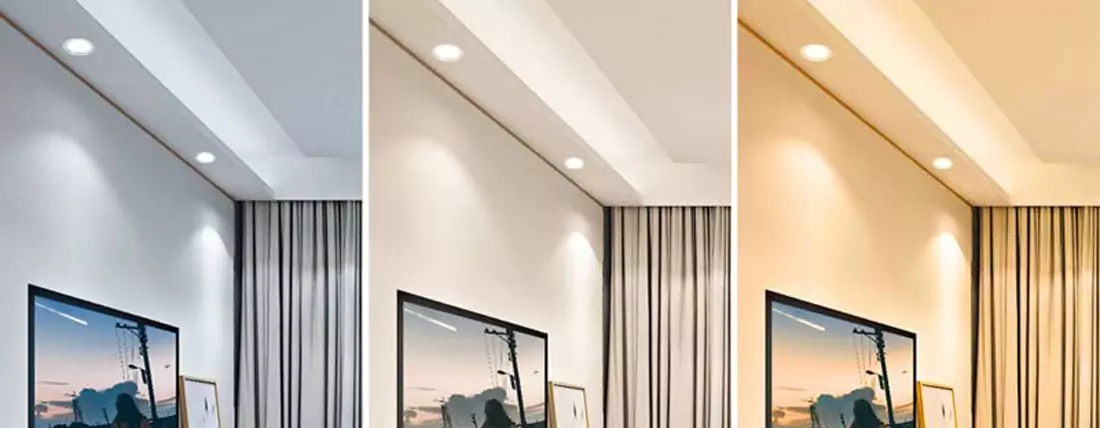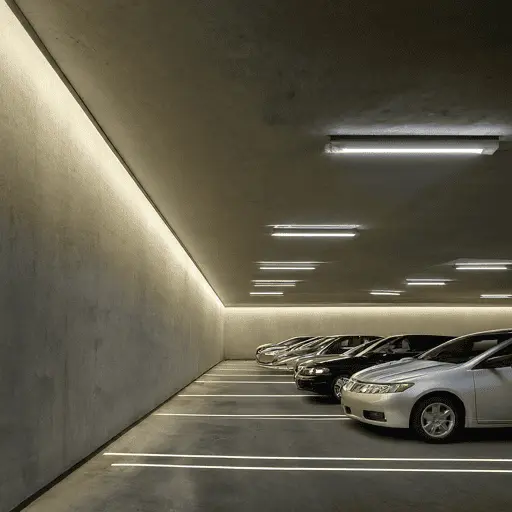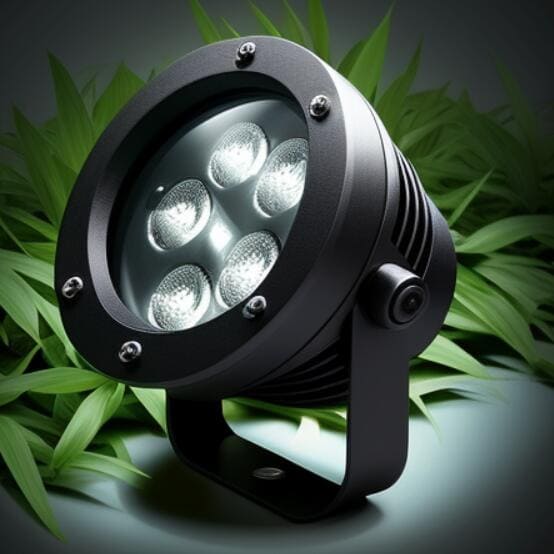I. Introduction
A. Importance of Art Gallery Lighting in Enhancing Artwork Appearance
Lighting in an art gallery is important. It can change simple images into amazing art that grabs people’s attention. Good lighting makes artwork look better and more like a masterpiece.
When lighting is done right, it shows all the small details, bright colors, and subtle parts in paintings. These things might not be seen under bad lighting, but with good lighting, they become clear and show the artist’s ideas and skills.
Also, good lighting makes people look closer at the art. It helps them see what the artist wanted to show. It can also change the mood of the art, adding more depth that makes the art more interesting.
In short, lighting in an art gallery is not just for light. It’s a tool that makes the art look better, makes the viewer’s experience better, and really brings the art to life.
B. Impact of Appropriate Lighting Selection on Paintings and Drawings
Choosing the right lights can really change how we see art. Things like color, brightness, and where the light points can change the feeling and look of the art. By picking the right lights, art galleries can make the art seem even more amazing.
In this guide, we’ll talk about how to light art in a gallery. We’ll give you helpful advice and tips to help you light your art the right way. We’ll help you understand how to make your art look its best.
II. Factors to Consider in Art Gallery Lighting
A. Color Temperature Selection for Desired Ambiance
The choice of lights and their color in an art gallery helps set the mood. Warmer colors (3000K-3500K), like natural sunlight, make the gallery feel cozy and welcoming. They make the art look warm and inviting.
Cooler colors (6000-6500K) give off a crisp and lively feel. They make the colors in the art pop, creating a more exciting visual experience.
Choosing the right color temperature for the lights in a gallery is important. It not only lights up the art but also creates a mood that adds to the art. To choose the right color, you need to understand the art, the space, and the emotions you want to evoke in the viewers.
B. Color Combinations and Their Effects on Artwork
Color is important in lighting because it changes how we see art. Using different colors together can make parts of the art stand out or create special effects. This isn’t just random – it needs a good understanding of how colors work and a willingness to try different combinations.
If you understand how colors impact each other, you can adjust the lighting to match your artistic idea. This can make certain parts of the art stand out, show its depth, or even make the viewer feel certain emotions. So, using color in lighting is a powerful tool for artists, giving endless ways to express themselves.
C. Color Rendering Index (CRI) and True Color Display
The Color Rendering Index (CRI) tells us how well a light shows the real colors of objects compared to natural light. The higher the CRI, the better and more real the colors look under the light. This is really important when choosing lights for art galleries.
In art galleries, showing the art correctly is very important. So, it’s key to pick lights with a high CRI. This makes sure that all the different colors and small changes in the art pieces are shown correctly. High-CRI lights in an art gallery mean that people see the art the way the artist wanted. The lights show the real colors and even the smallest changes in color, making it almost like seeing the art in natural light.
D. How Installation Methods Affect Light Performance
Setting up lights in a gallery is important for good lighting. Where you place the lights, their angle, and how far they are from the art are all important for the best lighting. A good setup will spread the light evenly, reduce glare and shadows, and highlight the details in the art. This makes the art look better. Using lights that can be moved and adjusted is a good idea. This way, you can change the lighting as the art on display changes.
By thinking about these things when setting up your gallery, you can make the art look better and improve the experience for visitors. Good lighting can change how people see art. It can make it more interesting and memorable, making the gallery visit better for everyone.
III. Influence of Lighting on Art Appreciation
A. How Different Lighting Changes the Look of Paintings and Art Pieces
Lighting in an art gallery is important. It can change how people see and feel about the art. Different types of light can create different effects.
For example, spotlights can highlight specific parts of an artwork, making them stand out. This can make the art more dramatic and exciting.
On the other hand, soft, even lighting can create a calm and thoughtful mood. This type of lighting is good for art that is meant to be quietly appreciated or makes people feel peaceful.
Another type of lighting is directional lighting. This type of light points in a specific direction. It can create interesting shadows, highlight parts of the art, or guide people’s eyes.
Lighting is a powerful tool for curators. They can use it to create certain moods or enhance the story that the art tells. By thinking carefully about the lighting, curators can make the art gallery a more special place for visitors.
B. How Lighting Conditions Affect the Way We See Artwork
Lighting in art galleries plays a key role in how people see and engage with the art. The brightness, direction, and type of light can greatly affect how colors look, the level of contrast, and how powerful the artwork appears.
If the lighting is too bright, it can be overwhelming. It might hide the small details in the artwork, like soft brushstrokes or slight changes in color. Too much light can also make people uncomfortable, stopping them from spending time with the art.
On the other hand, if the lighting is too dim or in the wrong place, it can also be a problem. Not enough light can make the artwork seem less impressive. People might struggle to see the details or the full range of colors and textures in the art. In some cases, parts of the artwork might be in shadow, making it hard for people to fully enjoy it.
So, art galleries need to think carefully about their lighting. By doing this, they can make sure people have the best possible visual experience. This isn’t just about where the lights are or how bright they are, but also about things like the color of the light.
When the lighting is just right, it can make colors more vibrant, increase contrast, and bring out the textures and details in the artwork. This helps people see the art the way it was meant to be seen, picking up on the small details that the artist intended and improving their overall experience.
C. Making Details Stand Out with Good Lighting
Good lighting can show the fine details of art. Art galleries use light in smart ways to show off the textures and shapes in their paintings and sculptures. The way light is placed can make art look more three-dimensional and alive. Light can also guide where people look, making important parts of the art stand out.
Understanding how light affects how we see art can help art galleries make visiting them a great experience.
IV. Types of Art Gallery Lighting
A. LED Spotlights for Focused Illumination
LED spotlights are popular in art galleries because they give bright, focused, and changeable light. These lights are carefully made to let gallery curators point the light exactly where they want, which helps show off parts of the artwork that people might not notice otherwise.
This kind of detailed and directed light helps show the fine details of the artwork, making it look even better. The lights can be adjusted to change the brightness and direction based on what the artwork needs, so every detail gets the best light.
These spotlights are especially good at making dramatic lighting effects. By changing the light in clever ways, curators can show off the texture, color, and brush strokes of paintings or sculptures. This not only shows the art’s best qualities but also helps make a beautiful atmosphere that attracts viewers.
In short, LED spotlights give bright and adjustable light, making them a great lighting solution for art galleries. They improve the overall experience by highlighting even the smallest details of the artwork.
B. Adjustable Recessed Lighting for Versatility
Recessed lights are a great choice for art galleries. They’re neat, fit into the ceiling, and help make the space look modern and tidy. They’re also good at lighting up different kinds of art.
These lights are flexible. You can move them around and change their angle based on the art you’re showing. This means you can light each piece of art just how you want to.
You can also change how bright these lights are and where the light points. This lets you highlight certain parts of the art. Because of this, recessed lights are a good lighting choice for art galleries, as they can adapt to different exhibits.
C. LED Track Lighting for Flexible Positioning
LED track lights are great for lighting up art galleries. They work by attaching tracks to the ceiling where lights can slide along as needed.
These lights are flexible. You can move them, change the angle they shine at, and adjust their brightness. This means you can light up artwork in many different ways, not just one.

Gallery curators like these lights because they can try different lighting setups to see what looks best for the art. Also, as the art changes, the lights can easily be moved to match. This makes sure the lighting is always just right for the artwork, making it look better for visitors.
In short, LED track lights are a flexible and adaptable way to light up art in galleries, making the art look better for those who come to see it.
D. LED Spotlights for Highlighting Specific Pieces
LED spotlights are great for art galleries. They can highlight specific artworks, making them eye-catching.
The best part about LED spotlights is their adjustability. They can be moved and their brightness can be changed. This allows gallery workers to set the right lighting for each artwork, emphasizing certain parts or creating interesting visual effects. For example, a bright spotlight can highlight a sculpture, while a softer light can bring out the colors in a painting.
LED spotlights can also be placed anywhere, allowing galleries to highlight some artworks more than others. This way, gallery workers can guide visitors’ attention around the room and towards the most significant pieces.
LED spotlights are also eco-friendly. They consume less energy than regular lights and last longer, so they are a greener and more sustainable option.
In conclusion, LED spotlights add value to art galleries. They not only enhance the artworks but also improve the overall visitor experience by emphasizing key pieces.
E. LED Wall Washers for Overall Ambiance
LED wall washers give a soft, even light over big areas. They are put on walls or ceilings, spreading light evenly. They’re perfect for art galleries because they light up the art without causing harsh shadows or glares. This kind of light makes the gallery feel welcoming and improves its overall look.
When choosing the right kind of light for an art gallery, curators need to think about what each type of light can do. This way, they can make sure they choose the best lights to make their art look its best.
V. Considerations in Choosing Art Gallery Lighting
A. Different Types of Light Technology and Their Characteristics
When selecting art gallery lighting, it’s important to consider the different types of lights available and their characteristics.
LED lights are a popular choice due to their energy efficiency, long lifespan, and excellent color rendering capabilities. They produce little heat, reducing the risk of damage to delicate artworks.
Halogen bulbs light, although less energy-efficient, offer exceptional color accuracy and a warm, natural light.
Fluorescent bulb lights are another option, providing a cost-effective solution with good energy efficiency. Understanding the characteristics of each light types can help you choose the one that best suits your specific lighting needs and artistic requirements.
B. Maintenance-Friendly Fixtures for Long-Term Convenience
Choosing easy-to-maintain light fixtures is important for art galleries. Pick fixtures that are simple and easy to clean. This will save time and effort on upkeep, freeing up staff for other tasks.
Choose fixtures where you can easily reach the bulbs. This makes it quicker to change bulbs or tweak settings. This keeps gallery lighting perfect at all times.
Sturdy, reliable fixtures need less upkeep over time. This means you’ll spend less time and money on repairs or replacements. This makes your lights work well for longer.
In short, picking light fixtures that are easy to look after not only ensures great lighting for art, but also saves time and money, and makes running the gallery smoother.
C. Adjusting Light Fixtures for Different Art Displays
Art galleries often change their artwork displays. This means they need flexible lighting that works well with different sizes, colors, textures, or positions of art.
Light fixtures need to be easy to move or adjust. This way, each artwork can be lit in a way that shows off its best features.
Track lighting systems are good because they’re versatile. You can move or adjust each light on the track as needed. Adjustable spotlights are also a great choice. They can focus on one piece or area, making the artwork really stand out.
Movable fixtures are helpful because they can be moved or adjusted as the artwork display changes. This way, the lighting always fits the artwork.
By focusing on flexible lighting, galleries can always show their artwork in an interesting and engaging way. This makes the visitor’s experience better, letting them see the art in the best possible light.
D. Energy Consumption of Art Gallery Lighting Options
Energy consumption and efficiency are important considerations in art gallery lighting. This can lower costs and help the environment. LED lighting fixtures are are a good choice because they use less electricity than traditional incandescent or halogen bulbs. Choose light fixtures with high lumens per watt (lm/W) ratings, as they are greater efficiency. Additionally, consider incorporating lighting controls, such as dimmers or sensors, to further optimize energy usage by adjusting light levels based on occupancy or natural light availability.
By considering these factors when choosing art gallery lighting, you can ensure that your lighting selection enhances the artwork’s presentation, offers long-term convenience, adapts to changing displays, and minimizes energy consumption, creating an exceptional and sustainable gallery lighting solution.
VI. Conclusion
Art gallery lighting is important in showcasing artwork and engage viewers. By selecting appropriate lighting, galleries can enhance the colors, details, and overall impact of the artwork. Considering factors such as light characteristics, maintenance requirements, and energy efficiency is crucial in making informed decisions when choosing lighting equipment.
Knowing how different lights can change the way we see art helps galleries create beautiful spaces that make art even more enjoyable. By focusing on good lighting, art galleries can make sure each piece of art looks its best and leaves a lasting impression on visitors.
FAQs
Q: What should the lighting level be in an art gallery?
A: Art gallery lighting should be adjusted to make the artwork look its best. Usually, lighting is set between 50-150 lux for paintings and sculptures, and a bit brighter for smaller or more detailed pieces. But, the best lighting can change based on the type of artwork and what the curator wants. Some artworks that are sensitive to light or made from delicate materials might need dimmer light to avoid damage. Others might need brighter light to show off more details. Talking to lighting experts or art preservers can help find the right lighting for each gallery and its art.
Q: What lighting do art exhibitions use?
A: Art exhibitions have a variety of lighting options, including track lighting for flexibility, spotlights for focused illumination, wall washers for ambient lighting, recessed lighting for a streamlined look, and LED fixtures for energy efficiency and color rendering. These lighting techniques are employed to enhance the visual impact of the artwork, highlight specific details, create a cohesive ambiance, and guide the viewer’s attention. The specific combination of lighting used depends on the nature of the exhibition, the type of artwork, and the curatorial vision.
Q: What are the rules for lighting artwork?
A: Follow these simple steps to light artwork well:
keep it away from direct sunlight to stop damage, use the right color temperature (about 4000K-5000K) for true colors, make sure the brightness is even to avoid glare, use adjustable lights for more control, make sure the lighting is even for consistency, and keep an eye on your lighting fixtures. These steps will help create a nice setting that makes your artwork look its best and keeps it safe.
Q: How do you light a painting gallery?
A: Here’s how to light a painting gallery:
- Use track or recessed lights. They can be moved to shine right on the paintings.
- Choose lights that are around 4000K-5000K. This will show the true colors of the artwork.
- Set the lights at an angle to avoid glare and shadows.
- Space the lights out evenly for good lighting all over the gallery.
- Keep direct sunlight away and use UV-filtering glass to protect the paintings.
- Regularly check and look after the lighting system for the best results.
Follow these tips to make the gallery’s paintings look their best and give visitors a great viewing experience.
Q: What is the standard lux for art gallery?
A: Art galleries usually have a light level, or lux, between 50 to 150. This is bright enough to see the art but doesn’t harm it. However, the right light level can change. Some pieces might need less light to avoid damage. Smaller or detailed pieces might need more light to see better. Talking to lighting experts or conservators can help find the right light level for a gallery and its art.
Author
-

I'm Joseph, the Co-founder of CST Lighting, bringing over a decade of expertise in the LED lighting industry. With a strong focus on product marketing, I am dedicated to staying at the forefront of market trends, constantly enhancing my knowledge and skills to deliver top-notch products and services to our clients. Through our insightful blog posts, we strive to share our expertise, guiding readers through the ever-evolving landscape of LED lighting. Learn more via my linkedin profile https://www.linkedin.com/in/ledcst-joseph/
View all posts


